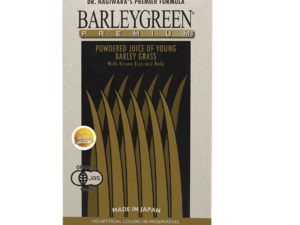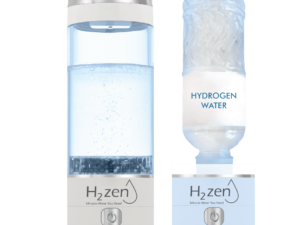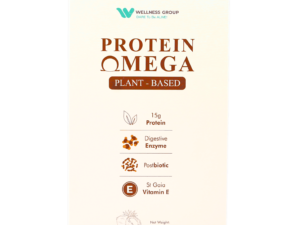Surprising fact: up to 80% of molecular hydrogen can escape within 30 minutes if generation and storage are not handled correctly.
Wellness Group offers clear, research-aligned advice for anyone curious about safe use and benefits.
This short guide explains the safest way to enjoy hydrogen water from approved metal formats. It stresses generation in certified devices, the right choice of drinking water, and quick use after making the drink to keep levels high.
Readers will learn why seal quality, certified BPA- and PFAS-free materials, and cool, dry storage matter for both safety and performance. It also covers routine care: avoid harsh cleaners, descale as advised, and do not agitate during generation.
Local help: Wellness Group is reachable on WhatsApp at +60123822655. Business hours: Mon–Fri 9:30 am–6:30 pm; Sat–Sun 10 am–5 pm.
Key Takeaways
- Generate hydrogen water in certified devices and drink fresh within 10–30 minutes for best effects.
- Start with clean, filtered water; avoid distilled or very hard water for electrolysis performance.
- Choose BPA- and PFAS-free metal designs with tight seals to slow gas loss short term.
- Maintain the device: regular cleaning and gentle handling protect safety and longevity.
- Wellness Group provides local support and troubleshooting via WhatsApp during listed hours.
Can you put hydrogen water in a metal water bottle?
Storing freshly generated hydrogen-enriched liquid in metal vessels raises practical safety and effectiveness questions. This short section gives clear, actionable guidance for safe use and fast results.
The short answer and when it’s safe vs. not safe
Short answer: yes, drinking hydrogen water from a metal bottle is possible, but best when the drink is produced in a certified hydrogen water bottle or transferred immediately into an airtight, vacuum-insulated metal container.
Safe: clean, lined, corrosion-resistant interiors and tight seals that slow gas loss for a short time. Not safe: unknown metal finishes, damaged liners, or loose caps that vent gas and compromise safety.
Fast-start: the safest way to use, store, and drink hydrogen-rich water today
- Generate, then drink within 10–30 minutes to protect dissolved hydrogen concentration and benefits.
- Keep the cover closed during production; avoid running the generator while charging and don’t do more than two cycles without venting.
- If transfer is necessary, use a small headspace, cold conditions, and an upright, vacuum-sealed bottle to slow H2 loss.
For quick help in Malaysia, message Wellness Group on WhatsApp at +60123822655 during business hours: Mon–Fri 9:30 am–6:30 pm; Sat–Sun 10 am–5 pm.
Material matters: stainless steel, aluminum, liners, and hydrogen retention
Not all metals and coatings perform the same; some keep dissolved hydrogen longer and stay safer.
Stainless steel vs. aluminum
High-grade stainless steel usually resists corrosion better than aluminum. Coatings and liners change that reality.
Poor or worn coatings can flake and raise the heavy metals risk. Users should inspect interiors for scratches or buildup and replace damaged bottles promptly.
Lined steel and vacuum-insulated bottles
Vacuum-insulated, lined designs slow hydrogen gas loss by reducing thermal exchange and keeping lids tight. They still allow diffusion over time, so fresh generation gives the best levels.
Seal integrity, cap types, and leaks
Cap design matters. Wide-mouth lids with silicone gaskets must seat perfectly. Flip caps, sports spouts, and worn O-rings leak tiny amounts that speed concentration decline.
Keep bottles upright, avoid dents, and store in cool, dry places to protect seals and overall performance.
Quick checklist
- Choose lab-certified, BPA- and PFAS-free materials.
- Inspect liners for scratches or flaking to reduce impurities risk.
- Check seals, threads, and O-rings regularly for tight fit.
| Component | Benefit | Risk if damaged |
|---|---|---|
| Stainless steel (lined) | Good corrosion resistance; stable quality | Coating failure → heavy metals, impurities |
| Aluminum (coated) | Lightweight; often cheaper | Corrodes if liner fails → contamination |
| Vacuum insulation & seals | Slows hydrogen gas escape; steady levels | Worn seals → rapid diffusion, lower performance |
Need help choosing food-grade materials? Contact Wellness Group on WhatsApp at +60123822655 during business hours for guidance on safe, certified options and to discuss the best hydrogen water bottle choices. See more on safe, food-grade materials.
Choose the right water for hydrogen production and storage
Water quality directly shapes hydrogen production, electrode life, and the chance of unwanted byproducts. Start with a reliable local tap source or a well-filtered supply to balance performance and maintenance.
Filtered tap water and ideal TDS ranges for optimal performance
For most devices, filtered tap water with Total Dissolved Solids around 50–300 ppm supports efficient hydrogen generation while limiting scale. Users should test TDS periodically to keep production steady and predictable.
Distilled, hard, alkaline, and carbonated water: when they reduce effectiveness or cause buildup
Distilled water or some RO supplies may be too pure, weakening hydrogen output unless small minerals are reintroduced per device guidance.
Very hard or alkaline water drives electrode scaling and demands frequent descaling. Carbonated liquids disrupt the process and should be avoided entirely.
Chlorine and byproducts during electrolysis: why pre-filtration matters
Strong chlorine in tap sources can form chlorine gas, hypochlorous species, or chlorates during electrolysis. Simple carbon filtration lowers chlorine and protects both users and components.
- Start with filtered tap water in the 50–300 ppm band for best balance of levels and longevity.
- Use carbon filters if local tap has residual chlorine or odors.
- Avoid alkaline, carbonated, or very hard supplies to reduce scale and byproducts.
For personalized water recommendations in Malaysia, message Wellness Group on WhatsApp at +60123822655 during business hours.
How to use hydrogen water bottles correctly for maximum benefits
Practical habits matter. Using the right routine preserves dissolved gas levels and protects the device. Follow a simple workflow to get steady performance and reliable hydration benefits.

Generate, then drink within 10–30 minutes
Timing is key: drink within 10–30 minutes after generation to retain the highest dissolved hydrogen concentration. Short windows produce the best hydrogen water effectiveness for daily health and hydration.
Temperature rules
Use room-temperature to cool water (about 10–30°C). Avoid inputs hotter than 60°C because heat speeds gas loss and stresses internal components.
Operation basics
Keep the cover sealed during cycles. Do not shake the bottle, never run more than two cycles in a row without venting, and do not operate the generator while charging. These steps protect safety and performance.
Maintenance to protect components
Clean gently with mild solutions; avoid bleach and abrasives. Descale based on local minerals to prevent buildup on electrodes and keep output steady.
Need setup or maintenance support in Malaysia? WhatsApp Wellness Group at +60123822655 during business hours for step‑by‑step help.
Metal bottle scenarios: best practices for filling, transferring, and on-the-go use
On-the-go use calls for clear rules about filling, transferring, and keeping dissolved levels steady. Small habits make a measurable difference to retention and the overall user experience.
Producing vs. storing: generate in a certified device, then transfer if needed
Best way: produce in a certified hydrogen water bottle, then only move the drink to a metal flask if necessary. Direct transfer speeds loss, so keep pour distance low and motion gentle.
When a vacuum-sealed metal flask helps, and when it doesn’t
Vacuum-insulated, stainless steel flasks with tight gaskets slow hydrogen gas escape and help short-term performance. They do not stop diffusion indefinitely.
- Fill full: reduce headspace to keep concentration higher during short storage.
- Keep cool: cold conditions slow diffusion; avoid sun and hot bags in Malaysia’s climate.
- Avoid vents: sports spouts and straw lids vent gas; use solid threaded caps instead.
- Maintain seals: rinse and dry threads to prevent buildup that weakens closures.
- Pre-filter tap: if local tap has chlorine, filter before production to protect taste and devices.
Need individualized on-the-go tips in Malaysia? WhatsApp Wellness Group at +60123822655 during business hours for quick guidance.
Malaysia-focused tips and where to get help
Practical tips for Malaysians focus on matching home water profiles to device needs and protecting components from heat.
Tap variability and common filters
Because tap water quality varies by region and season, many households use simple carbon filtration to reduce chlorine before generation. Activated carbon reduces odor and residual chlorine and helps with taste and safety.
Reverse osmosis systems are popular but can yield low TDS. If devices struggle, adding modest minerals often steadies performance without heavy scaling.

Heat, humidity, and smart storage
Malaysia’s heat and humidity shorten seal life and stress batteries. Store devices and flasks in cool, dry places away from sun and hot cars.
Tight seals, minimal headspace, and prompt consumption support better hydrogen retention in tropical conditions. Commuters should keep flasks shaded and drink promptly for best benefits and hydration.
Get local help
When questions arise about ideal TDS, filters, or routine maintenance, message Wellness Group on WhatsApp at +60123822655. Business hours: Mon–Fri 9:30 am–6:30 pm; Sat–Sun 10 am–5 pm. Local advice improves device life, user experience, and overall quality.
Conclusion
Summary: This close ties clear, practical steps for certified generation, tight seals, and prompt consumption to protect gas levels and device parts.
Generate fresh and drink within 10–30 minutes. Use filtered supplies with modest minerals to aid production and avoid chlorine, very hard or carbonated sources. Distilled or RO may need mineral adjustment per device guidance.
Vacuum-sealed metal flasks slow loss but do not stop diffusion. Keep lids sealed, store cool, avoid charging during generation, and clean gently to protect components and overall performance.
For product matching, troubleshooting, or local help in Malaysia, message Wellness Group on WhatsApp at +60123822655 (Mon–Fri 9:30–18:30; Sat–Sun 10:00–17:00).
FAQ
Can one safely store hydrogen-rich drinking in metal bottles?
Storing molecular hydrogen in stainless steel or aluminum containers can be safe if the bottle is designed for hydrogen retention. Vacuum-insulated, lined bottles with tight seals maintain concentration better. Avoid unlined or corroded metal containers, which may leach heavy metals and reduce quality.
What is the short answer and when is it safe versus not safe?
The short answer: use certified, food-grade stainless steel or lined vacuum bottles for short-term storage. It is unsafe to use corroded, aluminum with worn coatings, or containers not rated for gas retention because they can accelerate H2 loss and introduce contaminants.
What is the fastest, safest way to use, store, and drink hydrogen-rich water today?
Generate hydrogen in a purpose-built generator bottle, seal it immediately, and drink within 10–30 minutes. Keep contents cool, avoid shaking, and transport in a vacuum-insulated flask if travel is needed to preserve concentration.
How do stainless steel and aluminum compare for corrosion, coatings, and heavy metals risk?
Stainless steel resists corrosion and typically poses lower heavy-metal risk. Aluminum can react if coatings fail or if acidic liquids are present. Look for 316L or food-grade 304 stainless and avoid cheap alloys or scratched interiors.
Do lined steel and vacuum-insulated bottles hold molecular hydrogen well?
Lined and vacuum-insulated designs slow H2 diffusion and temperature-driven loss, so they retain higher concentration longer. Performance depends on liner quality and seal integrity; higher-grade liners and double-wall vacuums perform best.
How do seals and cap types affect hydrogen retention?
A tight, high-quality cap prevents gas escape. Screw caps with silicone gaskets and flip lids with reliable seals are better than loose snap tops. Damaged gaskets or vents greatly accelerate H2 loss.
Which water is best for hydrogen production and storage—filtered tap, distilled, or other types?
Filtered tap water within an ideal TDS range (typically moderate minerals) gives reliable electrolysis performance. Extremely pure distilled water can reduce conductivity, while very hard or mineral-rich water can foul electrodes. Use a pre-filter if municipal supply has issues.
When do distilled, hard, alkaline, or carbonated options reduce effectiveness or cause buildup?
Distilled water may need additives or a conductive electrolyte for efficient hydrogen generation. Hard or mineral-rich water causes scaling and electrode buildup. Carbonated beverages introduce dissolved CO2 that interferes with production and can damage seals.
Why does chlorine and its byproducts matter during electrolysis?
Chlorine and chloramines in tap supplies can form disinfection byproducts during electrolysis, compromising taste and potentially forming reactive compounds. Pre-filtration or activated carbon filters reduce these risks and protect device components.
What are the timing rules for using hydrogen water bottles to maximize benefits?
Consume generated hydrogen within 10–30 minutes when possible. Pressurized, sealed bottles help, but concentration falls over time. Short storage times preserve optimal H2 levels for effectiveness and experience.
What temperature range preserves gas concentration best?
Room temperature to cool is ideal. Avoid hot liquids above 60°C, which accelerate hydrogen loss and can damage seals and electrochemical membranes. Chill gently if needed, but avoid freezing.
What operational basics protect the generator and improve longevity?
Do not shake the bottle, do not run repeated cycles back-to-back without rest, and avoid operating while charging unless the manufacturer states it is safe. Follow cycle limits and let internal components cool between uses.
How should users maintain bottles and internal components like PEM or SPE?
Clean gently with mild, non-abrasive solutions. Descale periodically if minerals are present and follow the maker’s guidance for electrode care. Avoid harsh chemicals that degrade membranes and liners.
Is it better to produce hydrogen inside the bottle or transfer after generation?
Produce inside a certified hydrogen generator bottle and drink directly or transfer quickly into a premium vacuum-insulated flask for short trips. Transferring long-term increases gas loss and contamination risk.
When does a vacuum-sealed metal flask help preserve levels, and when does it not?
Vacuum-sealed flasks slow diffusion and temperature-related loss, helping during short transport. They do not prevent gradual H2 escape indefinitely and offer limited protection if seals are compromised or the bottle has micro defects.
What should Malaysians know about tap variability, chlorine, and common filters?
Malaysian municipal water varies by region; some areas have higher chlorine or mineral content. Common domestic filters include activated carbon and ceramic units. Pre-filtration reduces chlorine and improves electrolysis performance and device longevity.
How do heat and humidity in Malaysia affect storage and device lifespan?
High heat speeds hydrogen loss and stresses seals and electronics. Store bottles in cool, shaded places and avoid leaving devices in cars. Regular maintenance helps counteract humidity-driven corrosion.
How can someone contact Wellness Group for product support or questions?
Reach Wellness Group on WhatsApp at +60123822655 during business hours: Mon–Fri 9:30 am–6:30 pm; Sat–Sun 10 am–5 pm for device guidance, replacement parts, and local advice.






